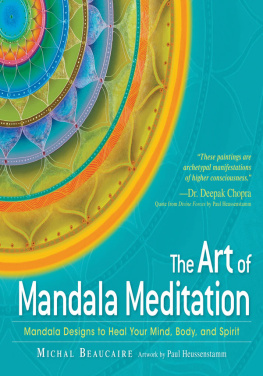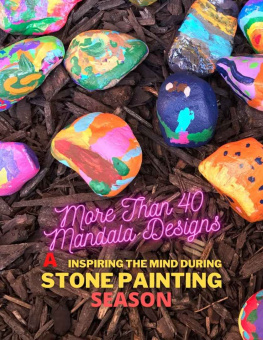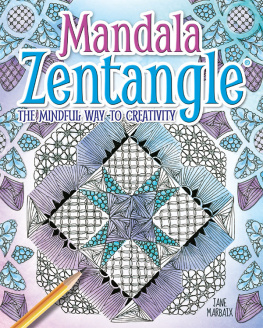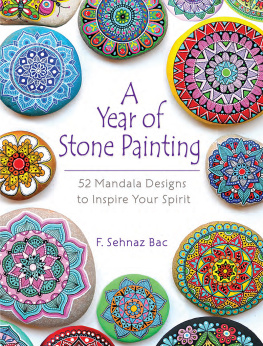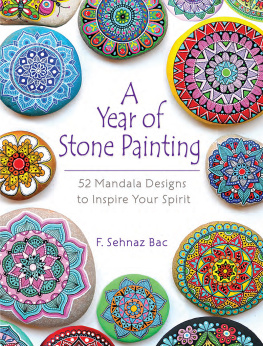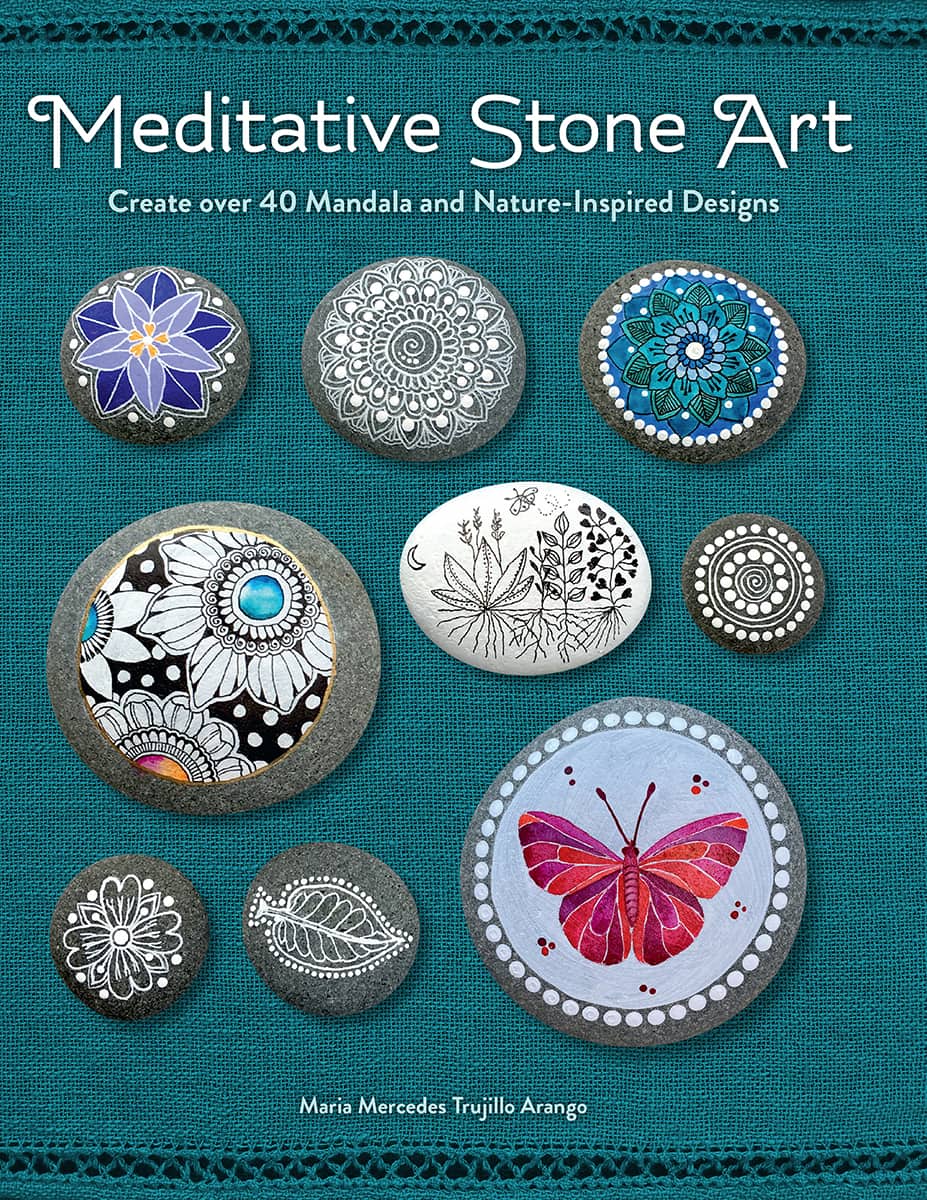Meditative Stone Art
Create over 40 Mandala and Nature-Inspired Designs
Maria Mercedes Trujillo Arango

Introduction
Ive collected stones since I was a child. I still have one I picked up on a family vacation when I was about eight years old, but it wasnt until much later that I started painting them. In 1994, I went to Sweden with my boyfriend (now husband) and I saw a beautiful painted stone with interlaced people drawn on it in black line worksimple and gorgeous. I couldnt afford it, but the image of that painted stone stayed with me. I never imagined that years later it would inspire me to paint my own stones. Then, in 2011, I took a trip around New Zealand and found beautiful round stones, which immediately made me think of drawing mandalas on them. Later, I expanded to painting stones with elements inspired by nature.
Painting stones, and making art in general, is a meditative act for me. When I sit at my table to draw and paint, I step into a place where I feel relaxed, safe, happy, and at home. I enter into a state of consciousness where Im aware of my surroundings, but what matters is what Im creating at that very moment and my connection with it. It is similar to when I go for a walk or on a trip, and I pay attention to nature, the colors, the forms around me. Making art is also part of my well-being; I feel good when I do it, but if days go by and I havent done any creating, I feel like something is missing from my life.
There are many ways of painting stones. Each artist has their own style, their own favorite tools and supplies, techniques, and tips and tricks; in this book, I share my own. In the first section of the book, I talk about my preferred tools and supplies, and why I like them. (What you specifically need for each project is included with the instructions.) I also include instructions on how to make your own dotting tools. Next, I tell you how I select the stones: what I look for when I collect them, where you can find them, and how to prepare them for painting. You will also learn how to transfer a design from paper to stone. Finally, I talk to you about color. Color is one of the reasons I paint; it fascinates me. Color choices and color combinations are very personal. I will share with you what I like, how I get inspiration from nature, and how I choose my color combinations. I will also give you some ideas and tips for choosing your own colors.
The projects are divided into two parts: Mandala Stones and Nature-Inspired Stones, along with a Special-Technique Project shown . There are projects for all skill levels, and that information is included below each projects title.
My aim with Meditative Stone Art is, of course, to show you how to paint stones, but more importantly, I want to inspire you. Use this book as a guide; I hope you find in it the motivationand the tools and techniquesyou need to explore, experiment, and create your own beautiful painted stones.
Tools and Supplies
The tools and supplies I list here are my favorites and the ones Ive found, by experimenting, to be the best for my style of painting, but these are certainly not the only ones you have to use. You dont need to go out and buy everything I list here; see what you have on hand first.
Brushes
Take good care of your brushes. Dont let ink or paint dry on them, and dont leave them standing in water. When using brushes, keep them moist and wipe off the excess paint on a soft, lint-free cloth. When cleaning brushes between paint colors, also wipe off the excess paint on a soft, lint-free cloth and rinse them well in water. To clean brushes, wash them with hand soap and warm water, reshape their points, and let them dry flat overnight; then store them, bristles side up, in a glass jar, so they are ready for your next painting session.
For painting, I love the Pro Arte Prolene Series 101 synthetic round brushes in sizes 3/0, 0, 1, 2, and 3. I use the Robert Simmons White Sable Brush in size 8 for applying gesso or acrylic to a large area.

Inks and Paints
I prefer using acrylic inks to acrylic paints because they have the perfect consistency for my style of painting. They are highly pigmented, dont need to be diluted, and can be mixed together to make more colors. Ive used the same two brandsDaler-Rowney and Dr. Ph. Martinssince I started painting stones, as they both have their own unique characteristics. You can, however, use acrylic paints if you prefer.
Daler-Rowney FW Acrylic Inks are my favorite and the ones I use the most. They are creamy and highly pigmented with some opaque and some semitransparent colors. Dr. Ph. Martins Bombay Inks are great for when I want transparency and watercolor-like effects. Other inks and paints I like to use are Dr. Ph. Martins Iridescent Calligraphy Ink in Copper Plate Gold for when I add gold to my artwork; Golden Fluid Acrylic Paint (in white and black) for adding dot details and painting the stones with a base layer; and Winsor & Newton Artists White Gesso also works well for painting the stones with a base layer.
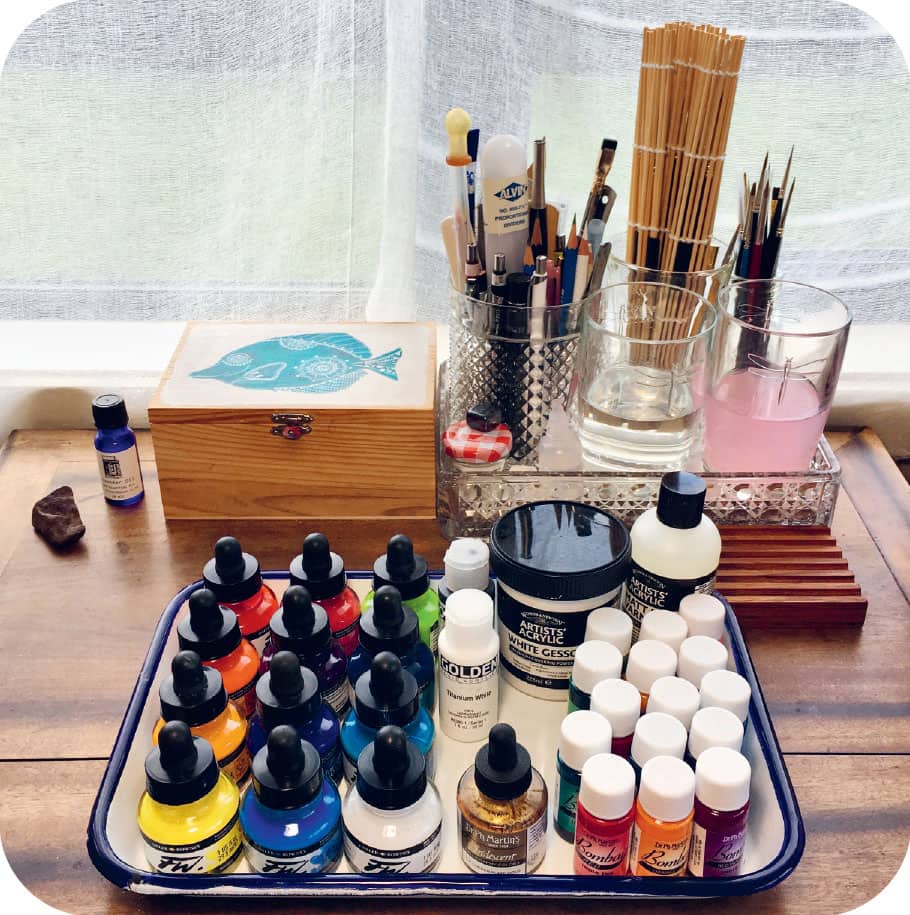
Markers and Pens
My favorite tool is a dip pen with Hunt 512 Nib. It is a stiff, bowl-pointed nib that can be moved in any direction and produces fine, even lines. There are many nib holders available, but Ive had the E+M Artists 2062 Nib Holder in Black for years and love it.
You can use your favorite black pigment fineliners if you have a preference; just make sure theyre waterproof and permanent. I like the Staedtler Pigment Liners in 0.1 mm, 0.3 mm, 0.5 mm, and 0.7 mm. Copic Multiliners, Faber-Castell Pitt Artist Pen Fineliners, and Sakura Pigma Micron are also great.
For paint markers, I prefer Uni Posca PC-1M 0.7 mm; these water-based paint markers come in twenty-five colors. And if you want to use silver ink, like in one of the projects, I like the Uni-ball Signo UM-153 Broad Pen in Silver.
Additional Tools and Supplies
I recommend having these tools on hand, as most are used in almost every project.
For drawing a design on the stone, I use an HB graphite pencil for drawing on stones that have been painted white and a


